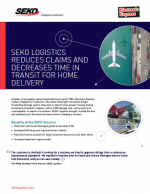United States Cross Border Ecommerce Parcel Shipping Advisory
Retailers, direct-to-consumer brands, marketplaces and marketplace sellers riding the lockdown boom in Cross Border eCommerce sales are going to get a massive ‘wake-up call’ in the mail from July 1 as Global postal rates into the United States start to soar by as much as 150% or more.
Universal Postal Union’s (UPU) and the United States Inbound Shipping Advisory
The Universal Postal Union’s (UPU) decision to allow the United States to set its own inbound postage rates – and, in doing so, create a more even playing field for international postal rates which have been intrinsically locked in the past – is a turning point in history for a cross border market forecast to rise to $627 billion by 2022, or 20% of eCommerce as a whole.
For the Trump administration, the UPU’s stand-down is nothing short of a triumph, or at least sound economic policy. China’s UPU status as a ‘developing’ country meant it was cheaper for Chinese sellers to ship to the U.S. than for the same products to travel to customers within the U.S. The outcome doesn’t entirely close the gap but, it seems, the USPS will no longer effectively be subsidizing deliveries of goods ‘Made in China’ to homes across all 50 states. It’s what one observer describes as “eliminating economic distortions for the distribution of goods.” You just need to be careful you don’t eliminate your margin along the journey.
The change comes as millions of more buyers have been converted to online shopping as brick-and-mortar outlets have literally closed shop to comply with governmental directives to reduce the spread of COVID-19. For a retail sector threatened with a projected global loss of $2.1 trillion in 2020, eCommerce remains one of its saving graces and, in so many cases, their single source of income in an otherwise stagnated sales environment.
What’s Related




Favorites





